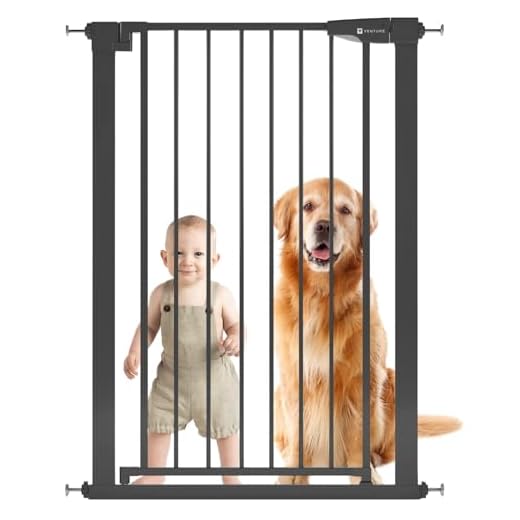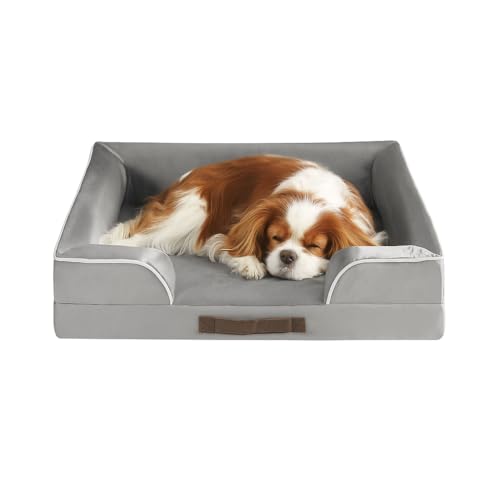








Introducing a small furry creature into your home can be an exciting yet daunting experience. If you’re contemplating whether your canine companion will accept a tiny feline, the answer often hinges on their temperament and socialisation history. Many canines possess a natural instinct to chase smaller animals, so gradual introductions are key to a harmonious household.
Start with scent. Before any face-to-face encounters, allow your pooch to get familiar with the scent of the new arrival. You can do this by swapping blankets or toys between the two. This simple step helps to reduce curiosity and potential anxiety when they eventually meet.
Supervised introductions are crucial. Keep the little one in a crate or separate room during the first meetings. Allow them to observe each other from a distance, rewarding your canine with treats for calm behaviour. This reinforces positive associations and eases the tension that may arise from their initial curiosity.
Pay attention to body language. Signs of stress in your furry friend, such as growling or stiff posture, indicate that the interaction may need to be curtailed. On the other hand, signs of relaxed curiosity, like wagging tails or gentle sniffing, suggest that they may be on their way to becoming friends.
Consistency is key. Regular, positive interactions will help build trust over time. Give both companions their own safe spaces to retreat to if they feel overwhelmed. With patience and careful management, many canines and felines can coexist peacefully, forming a unique bond that can bring joy to your home.
Assessing Your Canine’s Temperament Before Introducing a Feline
Before bringing a new furry companion into your home, evaluate the characteristics of your current pet. Observe their behaviour around other animals and people. A relaxed and sociable nature often indicates a smoother transition. If your four-legged friend enjoys interacting with other pets, that’s a promising sign.
Monitor their playfulness. A playful personality may adapt well to a younger, more energetic feline. If they are overly dominant or aggressive during play, this might signal potential challenges when introducing a smaller creature. Look for signs of possessiveness over toys or food, as these traits can complicate introductions.
Consider their history. If your companion has previously lived with other pets, they may be more accepting of a newcomer. On the other hand, if they’ve had negative experiences, such as a traumatic encounter, take extra precautions. Gradual introductions in a controlled environment can help alleviate anxiety.
Assess their response to sounds and movements. If your canine tends to bark or chase when they see smaller animals, it could indicate a strong prey drive. This behaviour requires careful management and gradual acclimatisation to ensure safety for both pets.
Lastly, gauge their energy levels. An active, high-energy breed may overwhelm a timid or older feline. Matching personalities and energy can lead to a more harmonious household. Be patient and give both animals time to adjust; a slow, thoughtful approach yields the best results.
Choosing the Right Kitten Breed for Your Canine Companion
Select a breed that aligns with the personality of your furry friend. For instance, consider the personality traits of both species. If your four-legged mate is energetic and playful, breeds like Abyssinians or Bengals, known for their active nature, might be a good fit. They can engage in play, helping to create a bond.
If your canine is more laid-back, breeds such as Persians or Ragdolls, known for their calm demeanor, can be more suitable. These gentle kittens often enjoy lounging around, which might complement a dog’s relaxed lifestyle.
Size matters. A larger breed of feline, like a Maine Coon, may intimidate a smaller pup, while a tiny kitten could be seen as prey. Ensure the size difference is manageable to prevent any accidental stress or aggression.
Consider the energy levels of both animals. If your pooch is a high-energy breed, a kitten that can match this enthusiasm will likely create a harmonious relationship. Conversely, a quieter feline might feel overwhelmed by an overly exuberant canine.
Temperament compatibility is key. Breeds such as Siamese are often sociable and can adapt well to living with different pets. This adaptability can make for a smoother introduction and a more peaceful coexistence.
Take into account the grooming needs. Some breeds require more maintenance than others. If you have a busy schedule, opt for a short-haired variety, which will require less frequent grooming than long-haired types.
Ultimately, the right pairing depends on the individual characteristics of both the kitten and the canine. Research various breeds thoroughly and consider their specific needs and temperaments before making a decision. This careful selection can lead to a joyful companionship that enriches both lives.
Monitoring interactions between your canine companion and your new feline friend
Keep a close eye on their initial meetings. Create a safe space where both can feel comfortable. Use a baby gate or a crate for the kitten to observe without direct contact at first.
- Observe body language: Look for signs of stress or aggression in both animals. Ears back, raised hackles, and growling from your pooch indicate discomfort. For the kitten, hissing or swatting can signal fear.
- Start with short sessions: Limit their interactions to just a few minutes at first. Gradually increase time as they become more accustomed to each other.
- Provide distractions: Have toys or treats available to redirect attention if tension arises. This can help keep the atmosphere light and playful.
If your furry friend shows curiosity but no aggression, reward that behaviour with praise or treats. This reinforces positive interactions. Conversely, if any signs of aggression are displayed, separate them immediately and try again later.
- Use positive reinforcement: When they interact calmly, reward both pets to encourage that behaviour.
- Monitor feeding times: Keep feeding areas separate to prevent food aggression. Feed them in different rooms or at different times.
Always supervise their playtime until you’re confident in their relationship. If your canine seems overly exuberant, it might be necessary to intervene to prevent the kitten from becoming overwhelmed.
Gradually allow more freedom as they become more comfortable with each other. Pay attention to their individual personalities; some may take longer to adapt than others. Patience is key.
Lastly, document their interactions. Take notes on their behaviour over time. This can help you identify patterns and adjust your approach if necessary. If you notice consistent stress or aggression, consult a professional trainer for tailored advice.
Tips for Fostering a Positive Relationship Over Time
Start with short, supervised interactions. Gradually increase the time they spend together as both become more comfortable. Keeping initial meetings brief helps avoid overwhelming either party, preventing negative associations.
Positive Reinforcement
Reward both the canine and the feline for calm behaviour around each other. Treats and praise reinforce good interactions and create a sense of safety. Over time, they will associate each other with positive experiences, making future encounters smoother.
Safe Spaces
Ensure each has their own retreat area. A dedicated space where they can feel secure is vital. This reduces stress and allows for independent relaxation. Additionally, consider using barriers like baby gates during initial introductions. Monitor their interactions closely, and be prepared to intervene if necessary. Consistent supervision helps build trust and understanding between them.
Also, keep feeding areas separate. Use a best dog food container to keep ants out to avoid food-related tensions that could arise. Feeding them in distinct locations encourages a peaceful atmosphere during mealtimes.
FAQ:
Will my dog accept a kitten in the house?
The acceptance of a kitten by your dog largely depends on the individual personalities of both animals. Some dogs have a natural instinct to chase small creatures, while others may be more curious or friendly. A gradual introduction is key. Start by letting them sniff each other from a distance, ensuring that both pets feel safe. Supervise their interactions and reward them with treats for calm behaviour. Over time, they may form a bond or at least coexist peacefully.
What should I do if my dog shows aggression towards the kitten?
If your dog displays aggression towards the kitten, it is important to intervene immediately to prevent any harm. Keep the kitten in a safe space away from the dog. Consult a professional animal behaviourist or trainer who can assess the situation and provide tailored advice. It might involve training your dog to associate the kitten with positive experiences, such as treats and praise, while ensuring the kitten remains safe during the process.
Are certain dog breeds more likely to get along with kittens?
Some dog breeds are generally known for their friendliness and adaptability, which may make them more likely to get along with kittens. Breeds like Golden Retrievers, Beagles, and Cavalier King Charles Spaniels often exhibit a gentle temperament. However, every dog is unique, so it’s essential to consider the individual dog’s personality rather than solely relying on breed characteristics. Conducting careful introductions and monitoring their interactions is advisable, regardless of breed.
How can I help my dog adjust to having a kitten?
To help your dog adjust to a new kitten, start with gradual introductions. Allow them to get used to each other’s scents by swapping bedding or using a cloth to rub both animals. Supervise their first meetings in a neutral space, and keep the dog on a leash if necessary. Reward calm behaviour with treats. Providing separate spaces for each pet can also help them feel secure. Patience is key, as it may take time for both animals to feel comfortable in each other’s presence.






